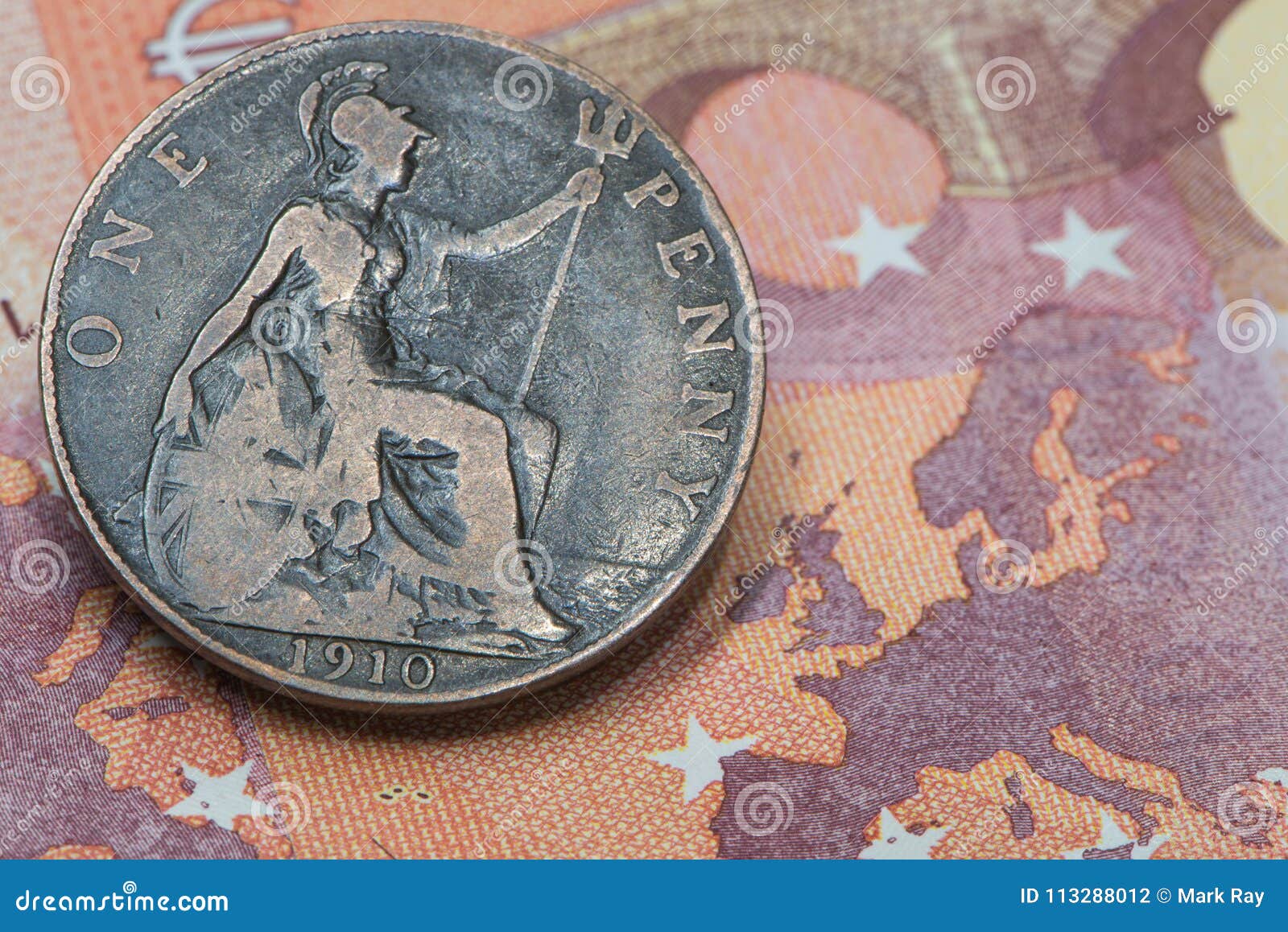British Penny
Please note: We have mainly written about England, as that is the country within the UK where our students live. We would be very happy for schools and visitors to send us information we can add to our website on Wales and Scotland. After the Norman Conquest in 1066, the pound was divided into twenty shillings or 240 pennies. It remained so until decimalization on 15 February 1971, when the pound was divided up as it is still done today. Before 1971 money was divided into:
Before decimalization on 15 February 1971, there were twenty (20) shillings per pound. The shilling was subdivided into twelve (12) pennies. The penny was further sub-divided into two halfpennies or four farthings (quarter pennies). 2 farthings = 1 halfpenny
Symbols The symbols 's' for shilling and 'd' for pence derive from the Latin solidus and denarius used in the Middle Ages. The '£' sign developed from the 'l' for libra.
One pound A £1 coin was called a Sovereign and was made of gold. A paper pound often was called a quid. More than a pound (£) 1 guinea and a £5.0.0 note 1 guinea = £1-1s-0d ( £1/1/- ) = one pound and one shilling = 21 shillings or 21/- (which is £1.05 in todays money) 1 guinea could be written as '1g' or '1gn'. A guinea was considered a more gentlemanly amount than £1. You paid tradesmen, such as a carpenter, in pounds but gentlemen, such as an artist, in guineas. A third of a guinea equalled exactly seven shillings. Why guinea? Because the Guinea coast was fabled for its gold, and its name became attached to other things like guinea fowl, and New Guinea.
Less than a pound (£) Shilling and pennies 'Bob' is slang for shilling (which is 5p in todays money) 1 shilling equalled twelve pence (12d). £1 (one pound) equalled 20shillings (20s or 20/-) 240 pennies ( 240d ) = £1 There were 240 pennies to a pound because originally 240 silver penny coins weighed 1 pound (1lb). A sum of £3 12s 6d was normally written as £3-12-6, but a sum of 12s 6d was normally recorded as 12/6. Amounts less than a pound were also written as: 12/6 meaning 12s-6d 10/- meaning ten shillings. An amount such as 12/6 would be pronounced 'twelve and six' as a more casual form of 'twelve shillings and sixpence'. More than a Shilling (s. or /- )Coins of more than one shilling ( 1/- ) but less than £1 in value were:
Less than a Shilling (s. or /- )
The word threepence would often be pronounced as though there was only a single middle 'e', therefore 'thre-pence'. The slang name for the coin was Joey. Penny coins were referred to as 'coppers'
Less than a penny(d)Pennies were broken down into other coins:
Farthing Half Penny Other names for coinsA shilling was often called a 'bob'. Five shilling piece or crown was sometimes called a dollar sixpence (silver) - often called a 'tanner' A penny was often called a 'copper' after the metal it was minted from. Old money conversions to money used today
| |||||||||||||||||||||||||||||||||||||||||||||||||||
'Your Guide To British & UK coins', reference website. Includes rare coin varieties, price guide with values and a discussion forum. UK currency coins. More than 250 coin pictures in colour, and over 200 pages of information. Pence Sterling is the currency in United Kingdom (England, Great Britain, Northern Ireland, Scotland, Wales, UK, GB, GBR). 'Your Guide To British & UK coins', reference website. Includes rare coin varieties, price guide with values and a discussion forum. UK currency coins. More than 250 coin pictures in.
© Copyright - please read |

1899 British Penny


© Copyright Mandy Barrow 2013

Mandy is the creator of the Woodlands Resources section of the Woodlands Junior website.
The two websites projectbritain.com and primaryhomeworkhelp.co.uk are the new homes for the Woodlands Resources.
Mandy left Woodlands in 2003 to work in Kent schools as an ICT Consulatant.
She now teaches computers at The Granville School and St. John's Primary School in Sevenoaks Kent.

British Penny 1912
- British pennies are some of the most widely collected copper coins in the world, and they even have a place in the hearts of many coin collectors in the United States, whose residents use the one-cent coin – which is mistakenly referred to as a 'penny.'
- Penny coins continued in to the UK era. Of British history, and were circulated under. All monarchs, except Edward VIII. 1 penny = 1/12 of a shilling = 1/240 of a pound. The first circulation issue UK penny. Was minted in 1806, and the last in 1967. We have also included the 1797 penny from. George III's era prior to the formation of.